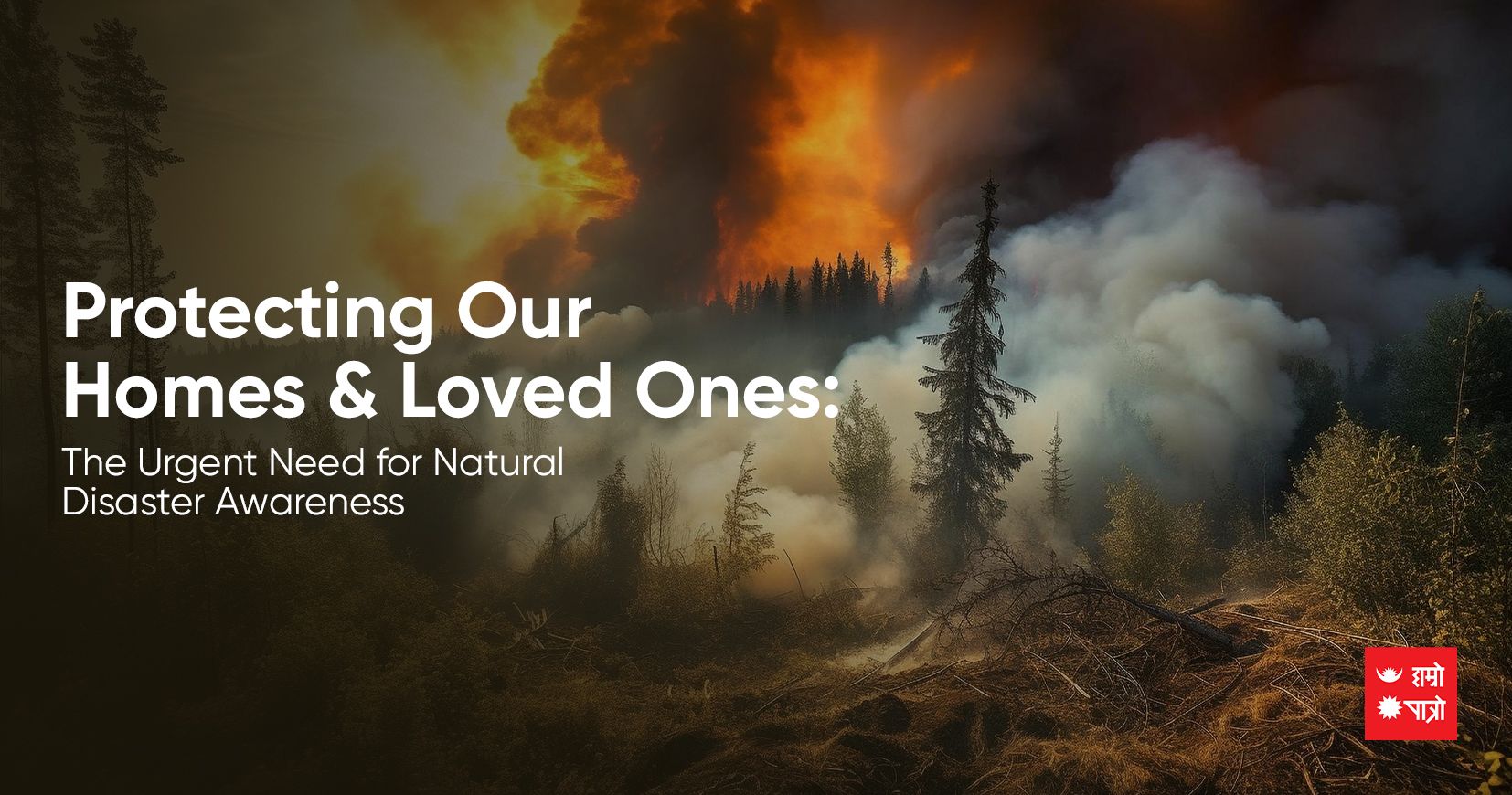
 Sudina Gautam - Jan 12 2024
Sudina Gautam - Jan 12 2024 Natural disasters have potential to damage our lives, causing damage to property, loss of life, and cause economic turmoil. Nepal, a landlocked Himalayan nation nestled between China and India, is renowned for its breathtaking landscapes, rich cultural heritage, and warm hospitality. However, it is also a country highly vulnerable to natural disasters, particularly in the context of climate change. The terrain of Nepal comes with its fair share of challenges, as the nation struggles with a range of natural disasters like earthquakes, floods, landslides, and glacial lake outburst floods. This article will delve into the multifaceted issues of natural disasters in Nepal, the impact of climate change, and the efforts taken to combat these challenges.
Climate change isn't something far away anymore. It's happening everywhere, including Nepal. The world is getting warmer, and this is causing more and worse natural disasters. In Nepal, this means things like floods and other disasters are happening more often and getting stronger.
* Glacial Melting: Nepal is home to a vast number of glaciers, which are melting at an alarming rate due to rising temperatures. This melting contributes to the formation of glacial lakes that pose a risk of outburst floods, endangering downstream communities.
* Unpreditcable Rainfall Patterns: Climate change has disrupted traditional rainfall patterns, leading to prolonged dry spells followed by intense rainfall. This erratic pattern triggers landslides and floods, causing substantial damage to homes, infrastructure, and agriculture.
* Increased Temperature Extremes: Rising temperatures have made the region more susceptible to heatwaves, which can have severe health implications for the population, particularly the vulnerable.
Impact on Nepal
Nepal's diverse geography, which includes tall Himalayan mountains and flat Terai plains, makes it more likely to experience natural disasters. Here are some of the important ways this affects Nepal:
* Loss of Life and Livelihoods: Natural disasters have resulted in the loss of numerous lives and livelihoods. Earthquakes, floods, and landslides often cause substantial damage to homes and infrastructure, displacing communities and hampering economic development.
* Agricultural Disruption: Nepal depends mainly on farming for its economy, and shifts in weather patterns have messed up the timing of planting and harvesting crops. This has resulted in smaller crop harvests and not having enough food.
* Environmental Degradation: Natural disasters contribute to deforestation, soil erosion, and the degradation of ecosystems, leading to long-term environmental damage.
* Economic Strain: The economic cost of responding to and recovering from natural disasters is substantial, diverting resources from other critical development needs.
Efforts to Combat Natural Disasters
Nepal recognizes the urgent need to address the challenges posed by climate change and natural disasters. The following initiatives and strategies have been implemented:
* Early Warning Systems: The government has invested in early warning systems to provide timely information about impending disasters. These systems have proven invaluable in saving lives and reducing the impact of disasters.
* Disaster Preparedness and Response: The National Disaster Risk Reduction and Management Authority (NDRRMA) plays a crucial role in disaster preparedness, response, and recovery efforts. They collaborate with international organizations and local communities to build resilience.
* Climate Adaptation: Various projects focus on climate adaptation, including community-based initiatives to reduce vulnerability and enhance resilience. These projects often involve sustainable farming practices and the construction of disaster-resistant infrastructure.
* International Cooperation: Nepal collaborates with international organizations and neighboring countries to address cross-border issues related to climate change and disaster management.
* Public Awareness and Education: Efforts are ongoing to educate communities about disaster preparedness and climate change. Building local capacity to respond to disasters is a priority.
Nepal's susceptibility to natural disasters, worsened by the impacts of climate change, underscores the pressing demand for taking action to confront these threats head-on. While Nepal has achieved considerable progress in preparing for disasters and adapting to changing climates, the journey is far from over. What's vital now is the power of collaboration on a global scale, significant investments in fortifying our infrastructure, and, most importantly, the active involvement of communities. Together, we forge a united front in Nepal's relentless battle against nature's fury, driven by a changing climate. Through this joint endeavor, Nepal aspires to safeguard lives, livelihoods, and the precious natural treasures that define our nation from the onslaught of climate-induced disasters.
Liked by: